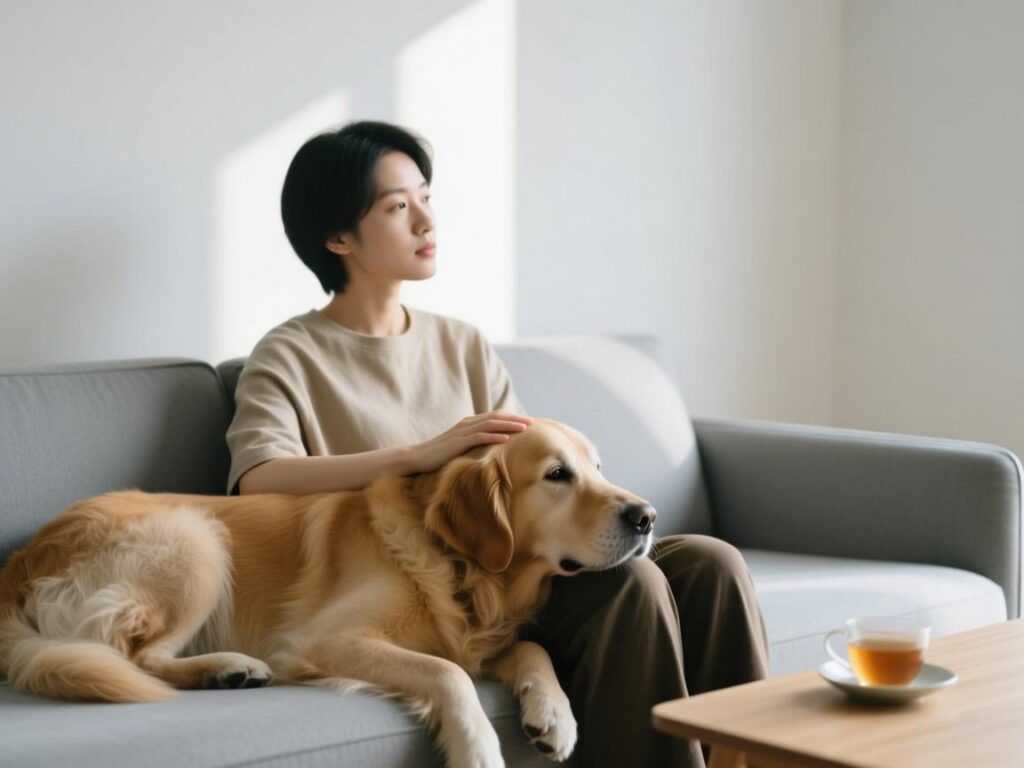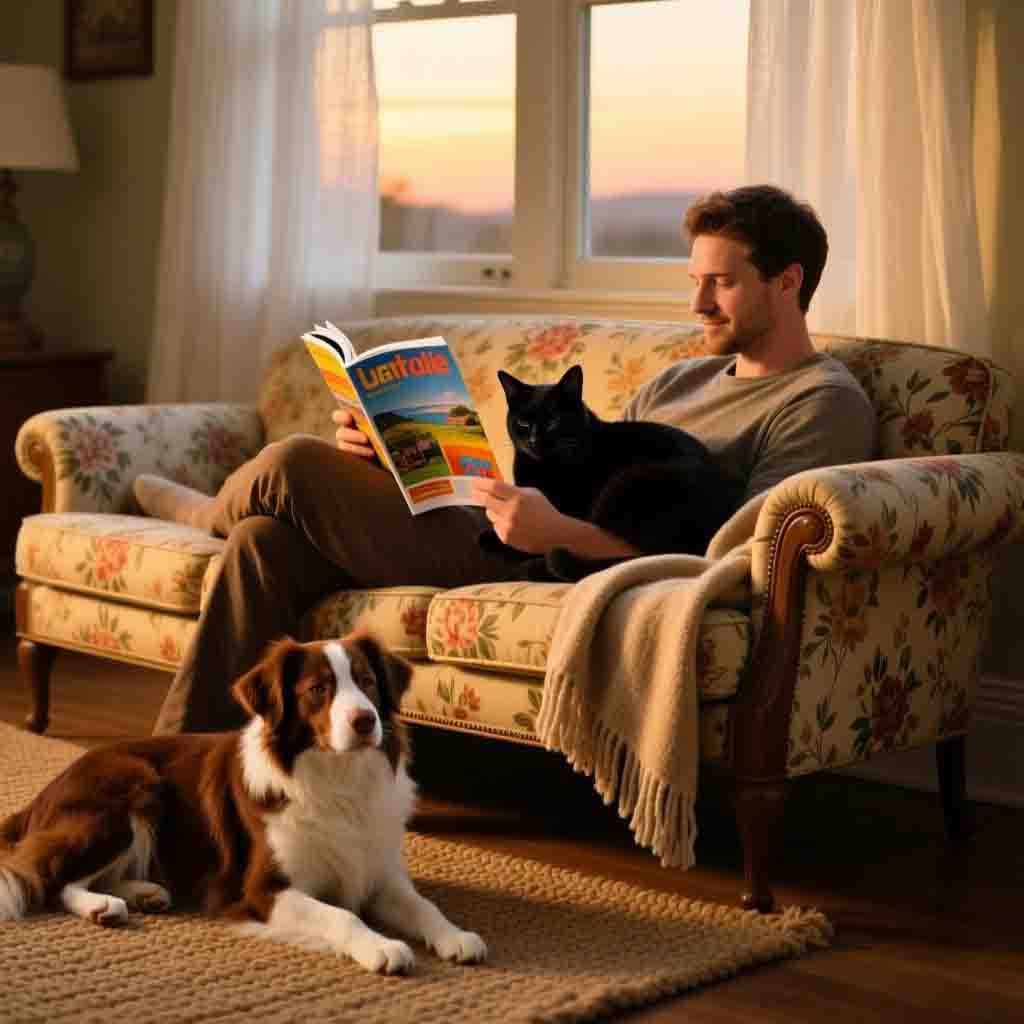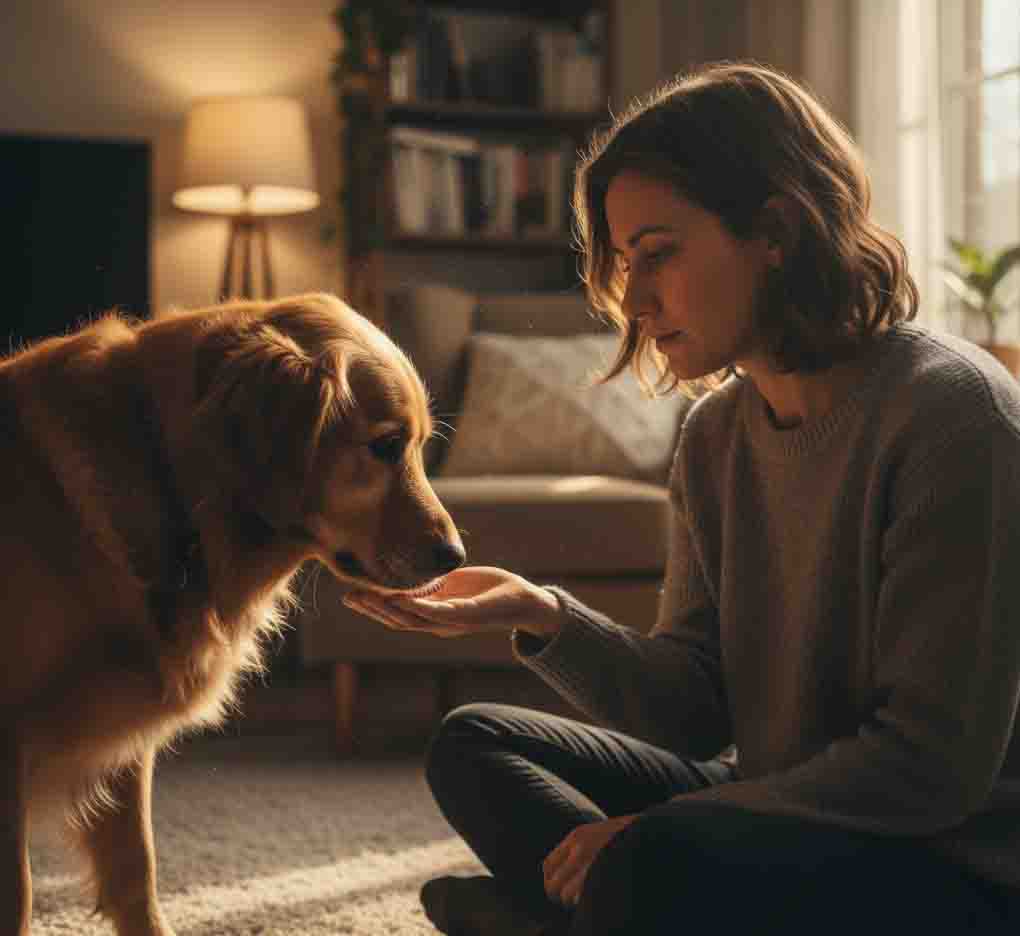It was during a particularly tense family discussion about holiday plans that our golden retriever, Sunny, decided the situation needed intervention. As voices began to rise, he calmly walked to the center of the living room, laid down with an audible sigh, and started rolling onto his back—paws in the air, tongue lolling out in what could only be described as a deliberate attempt to lighten the mood.
The effect was instantaneous. My sister, mid-sentence, burst into laughter. My father’s stern expression softened. The tension dissolved into shared amusement, and we found our way to a compromise that had seemed impossible moments before.
The Four-Legged Peacemakers
Pets possess an uncanny ability to sense and diffuse human tension. This isn’t just anecdotal—research in animal behavior suggests that domestic animals are highly attuned to human emotional dynamics and often intervene in subtle but effective ways.
The Distraction Technique:
Like Sunny’s timely comic relief, many pets seem to understand that interrupting escalating conflict can change its course. A well-timed nudge, a dropped toy, or an insistence on being petted can serve as a “circuit breaker” for rising tensions.
The Physical Bridge:
When two people are emotionally distant, a pet can create a physical connection between them. A cat choosing to nap between two arguing partners, or a dog insisting both owners join for a walk, creates shared space and experience where there was separation.
Social Catalysts in Fur Coats
Beyond conflict resolution, pets serve as powerful social connectors in our lives:
The Conversation Starter:
Walking a dog increases social interactions exponentially. Strangers feel permission to approach, ask about your pet, and share stories of their own animal companions. This simple social lubrication is particularly valuable in an age where human interaction is increasingly digital and isolated.
Building Community:
From dog parks to online pet groups, pets create ready-made communities of like-minded people. These connections often extend beyond pet-related topics, forming genuine friendships and support networks.
Teaching Empathy Through Example:
Watching how pets offer unconditional affection—without judgment or agenda—models a form of pure connection that we can aspire to in our human relationships. Their ability to forgive quickly and love generously sets a powerful example.

The Science Behind the Social Glue
Studies in anthrozoology (human-animal interaction research) have documented several ways pets enhance our social lives:
-
Oxytocin Release: Interactions with pets boost oxytocin levels in humans, the “bonding hormone” that promotes trust and attachment—feelings that extend to our human interactions
-
Stress Reduction: The calming presence of animals lowers cortisol levels, helping us approach social situations with greater equanimity
-
Non-Judgmental Acceptance: Pets offer a safe space to practice social skills without fear of criticism, building confidence that transfers to human interactions
Learning Their Language of Connection
We can learn to recognize and honor our pets’ natural mediation abilities:
Respect Their Interventions:
When your pet tries to insert themselves into a tense situation, consider it valuable feedback. Their discomfort with conflict might be signaling that everyone needs a breather.
Create Shared Pet Rituals:
Establish family routines centered around your pet—evening walks, weekend grooming sessions, or training activities. These shared positive experiences strengthen human bonds.
Watch and Learn:
Observe how your pet navigates relationships with different family members. They often demonstrate remarkable emotional intelligence, adjusting their approach based on each person’s needs and personality.
When Pets Reveal Relationship Truths
Our relationships with pets can also illuminate aspects of our human connections. How we care for our animals often mirrors how we care for each other. The patience we extend to a anxious rescue dog might reveal capacities we didn’t know we had. The joy we take in our cat’s quirky habits might remind us to appreciate the unique qualities in our human partners.
One couple I know credits their cat with saving their marriage. “When we’d argue,” the wife shared, “Mochi would bring us his favorite toy, one by one, until we stopped to acknowledge him. It forced us to pause the argument and recognize there was something more important happening in the room—this little creature who loved us both, regardless of who was ‘right.'”
The Living Lessons
Our pets teach us that sometimes the most powerful interventions are wordless. That physical presence can be more healing than perfect advice. That shared laughter can bridge the widest divides. And that love doesn’t need complex language to be profoundly understood.
As I watch Sunny now, peacefully sleeping between my daughter and her friend who were recently at odds, I’m reminded that the most sophisticated relationship therapy sometimes comes on four quiet feet, asking for nothing more than a scratch behind the ears and a peaceful home to work their magic.



